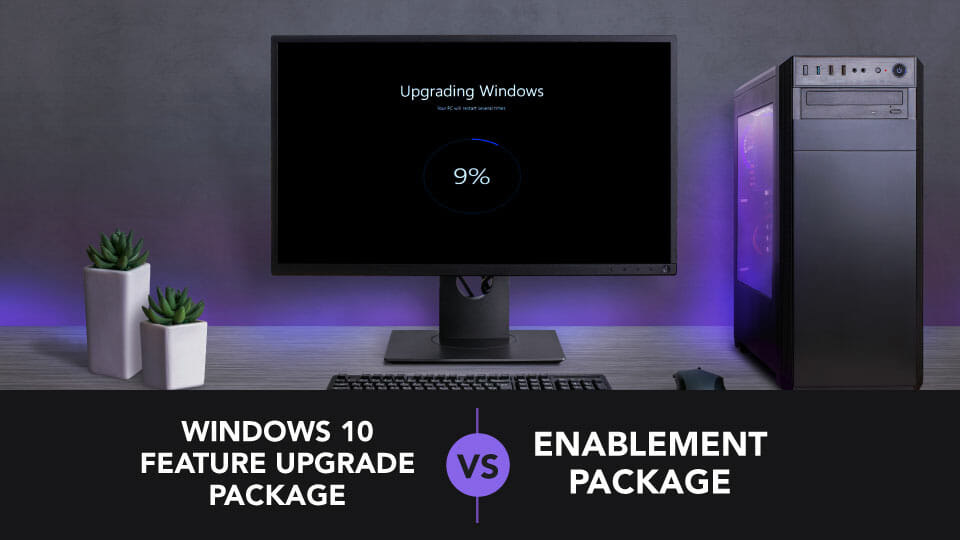Windows 10 Spring and Fall Updates
Microsoft has had a track record since 2017 of releasing 2 versions of Windows 10 every year – one in the spring, one in the fall. These have been feature-rich versions that have an 18 month servicing plan for security and functionality updates (30 months if you’re on the Enterprise or the Educational version). The problem is that for many enterprises, updating 50,000+ systems every ~6 months is a difficult feat, especially if they are spread around the world with different time zones and in different languages. Each feature upgrade starting from 1511 has taken lots of time to install on a machine, especially if the machine is slow and on a spinning hard drive. Solid state drives speed up the process 3-4 times, but you’re still looking at a 20-25 minute upgrade schedule where the computer is unusable. Microsoft has realized they must do something about this and they have. They have also come to realize that some enterprises are going to skip versions due to how long it takes to orchestrate upgrades – from installing, to testing, and then to mass deployment.
The “Enablement” Package
Starting in the spring release of Windows 10 1903, Microsoft has started to include code for the fall release of Windows 10 1909 within each cumulative update – only in a disabled state – as the 2 operating system versions share the same codebase.
The enablement package is only for systems of the spring release (1903, 2004, etc.) that have the latest CU’s installed. This will ‘enable’ the feature update options as the spring version already has the fall version embedded in it. What does this do? It GREATLY reduces the installation time of the fall version to a couple of minutes or less and 1 single restart! What a difference this has made!
Full Feature Package
If you are upgrading from a version 1809 or earlier, or moving to the next spring release, your system will still require the full feature upgrade package.
How Do I Know What Feature Upgrade To Approve?
Following Part 6 of my blog series relating to approvals, you should only be looking at updates that are NEEDED by your systems. WSUS will let you know what your systems are reporting as needed and then you can approve only those updates.
How Can I Get A List Of All Upgrades?
If you’ve followed Part 2 of my blog series, you’ll already have an Upgrades view that you can click on. Simply scope it to the approval of “Any Except Declined” with the status of “Any” as shown in the image below.
Are you confused about what the (consumer versions) and (business versions) are? See the post Windows 10 Upgrades – Business Editions Vs. Consumer Editions.






